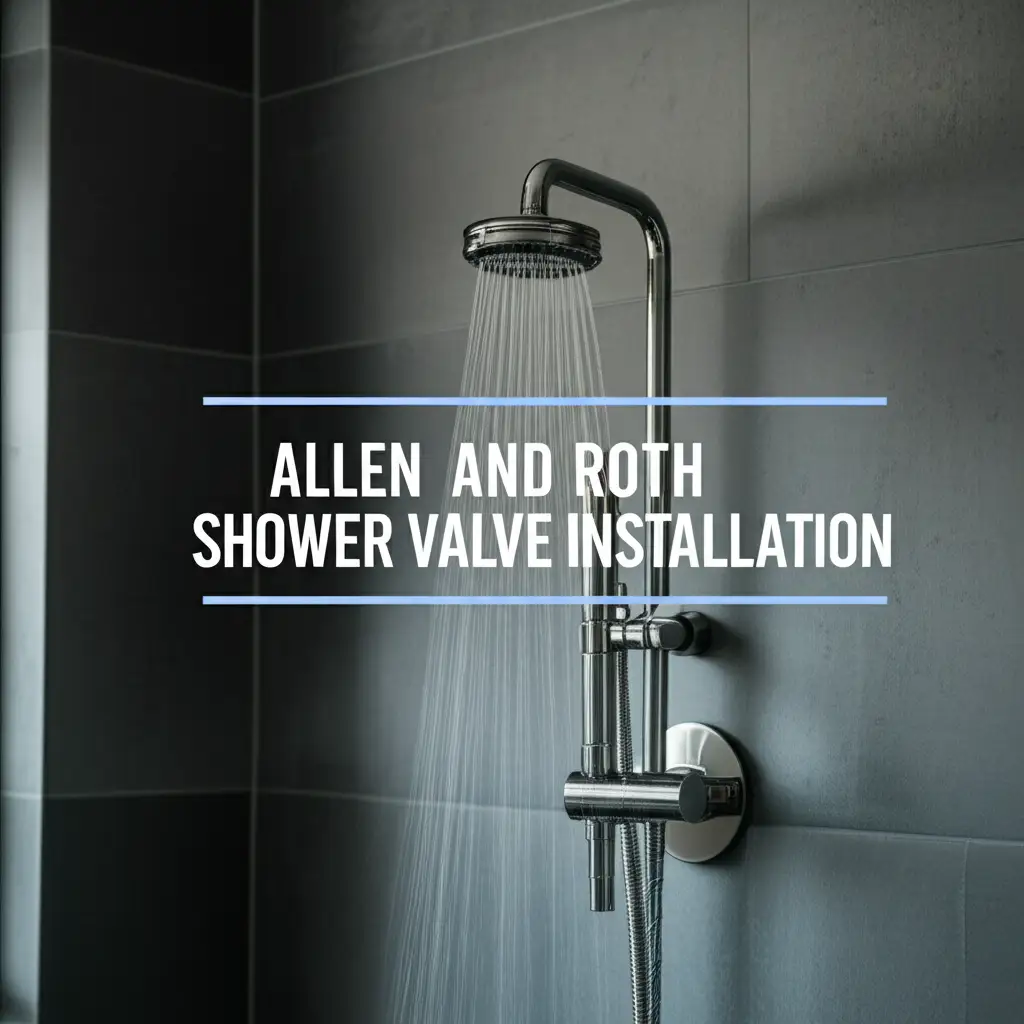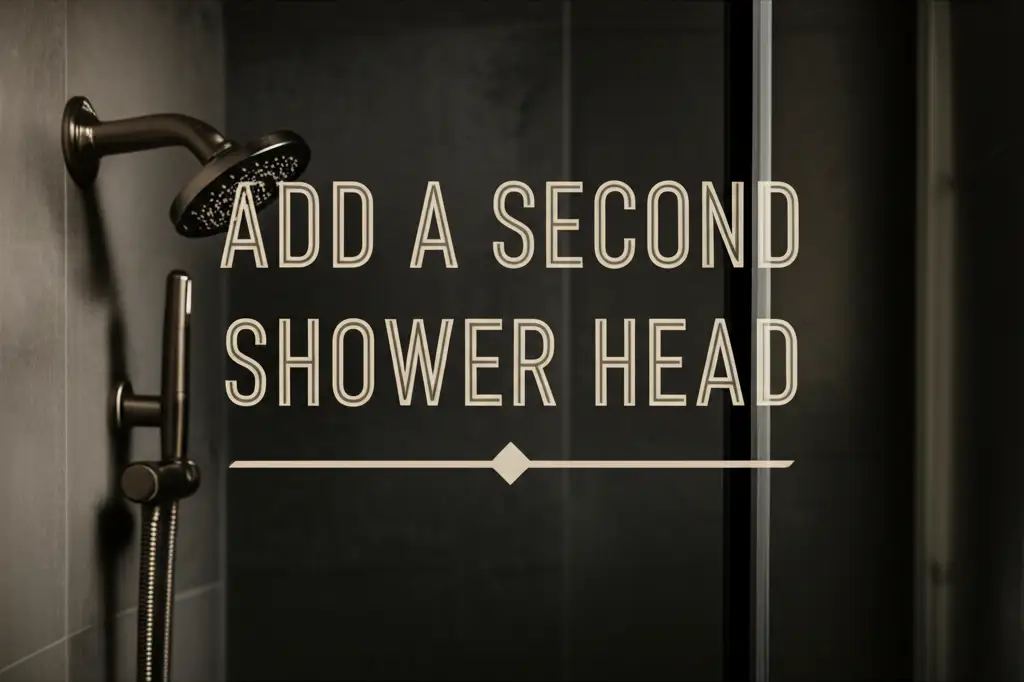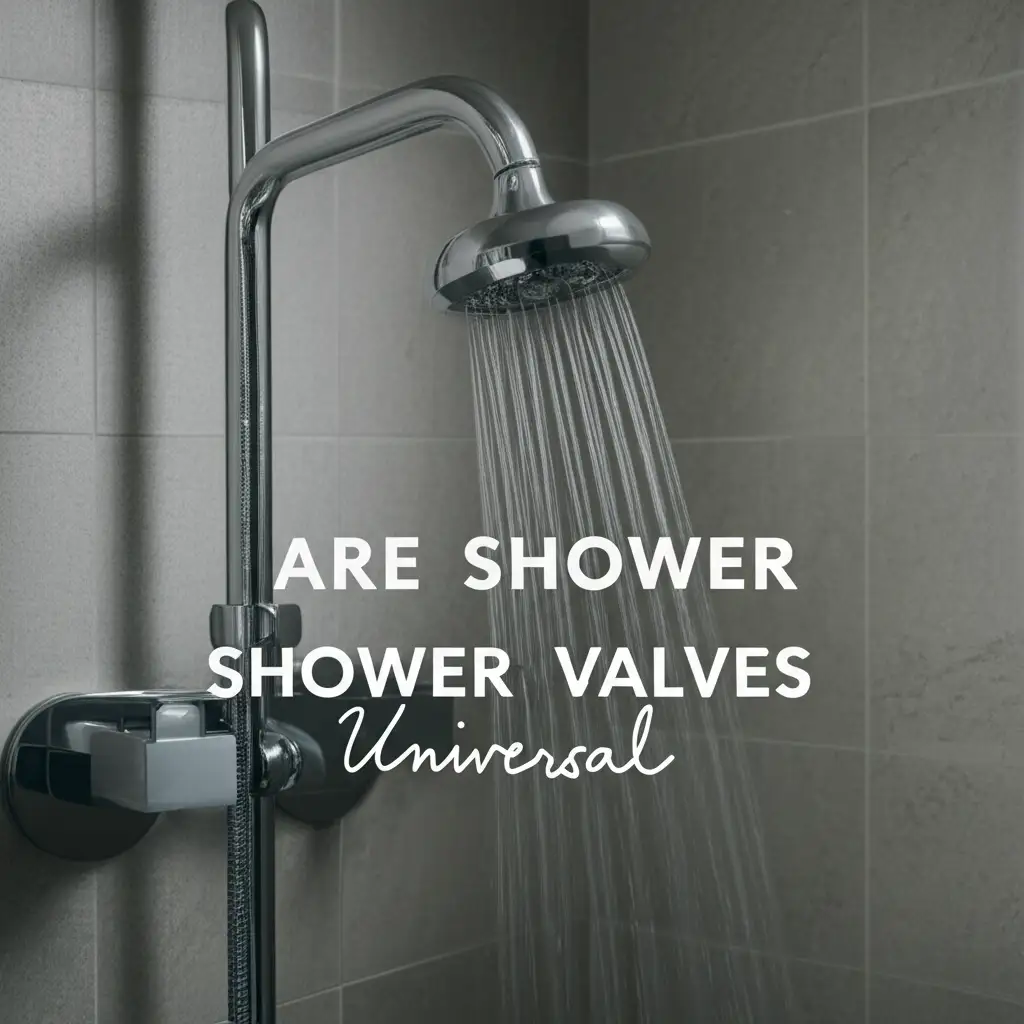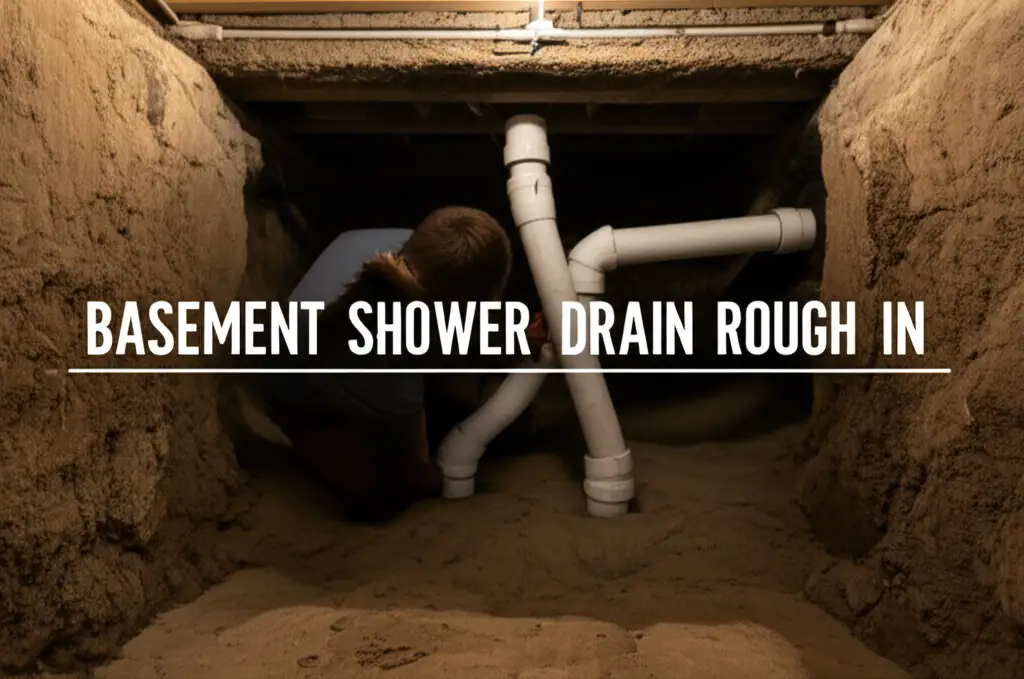· Elira Thomsen · Plumbing Guides · 16 min read
Are All Delta Shower Valves The Same
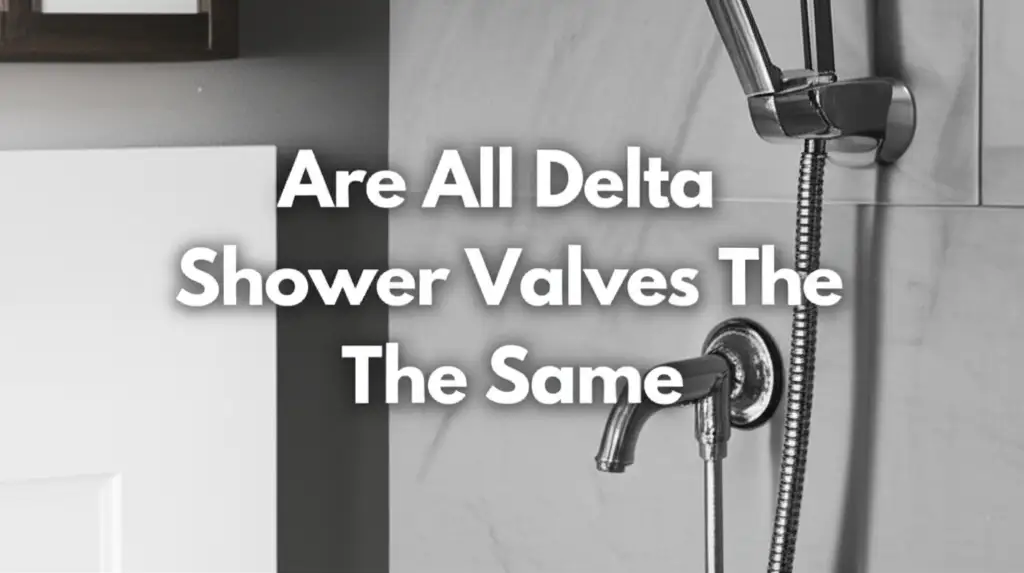
Understanding Delta Shower Valves: Are They All The Same?
Imagine stepping into your shower, expecting a perfect stream of water. You turn the handle, but something feels off. Perhaps the temperature fluctuates wildly, or the water pressure is weak. This often brings us to a crucial question: “Are all Delta shower valves the same?” Many homeowners wonder about this when facing a repair or planning a bathroom renovation. I hear this question often, and it is a common point of confusion.
The simple answer is no. Delta manufactures a variety of shower valves, each designed for specific functions and shower systems. Understanding these differences is key to getting the right part for your shower or choosing the best valve for a new installation. We will explore the various types of Delta shower valves, their unique features, compatibility factors, and why knowing these details truly matters. This guide helps you make informed decisions about your shower’s most important component.
Takeaway
- Delta shower valves come in many types, not just one universal design.
- Different valve types offer different water temperature and pressure control.
- Compatibility between valve bodies and trim kits is very important.
- Delta’s MultiChoice Universal Valve offers flexibility but still needs the right trim.
- Proper valve selection ensures a safe, comfortable, and reliable shower experience.
Are All Delta Shower Valves The Same?
No, all Delta shower valves are not the same. Delta manufactures several types of shower valves, each with distinct features, functions, and compatibility requirements. These include pressure balance, thermostatic, diverter, and volume control valves, designed for different shower systems and user needs.
The Foundation of Your Shower: What is a Delta Shower Valve?
A Delta shower valve is the hidden control center behind your shower wall. It mixes hot and cold water to deliver the desired temperature and controls the water flow to your showerhead or other components. This valve is truly the heart of your shower system. Without a functioning valve, you cannot control your shower effectively.
The shower valve consists of two main parts: the rough-in valve and the trim kit. The rough-in valve is the actual plumbing fixture installed within the wall. It connects to your home’s hot and cold water lines. The trim kit is the visible part outside the wall. It includes the handle, escutcheon plate, and spout (if applicable). Understanding this two-part system is very important for any shower project.
Delta offers various rough-in valve options. Each rough-in valve is designed to work with specific trim kits. This design ensures that the internal workings match the external controls. A good quality valve provides consistent temperature and water pressure. This makes your shower experience safe and enjoyable.
Choosing the correct Delta shower valve is more than just picking a brand. It means selecting a valve that meets your needs for control, safety, and functionality. It also ensures compatibility with your chosen shower design. I always tell people to think of the valve as the engine. The trim is the dashboard. Both must work together.
Exploring Different Delta Shower Valve Types
Delta produces a range of shower valves, each serving a specific purpose in creating your ideal shower experience. Knowing these types helps you understand why “all Delta shower valves are not the same.” These different valves offer varying levels of control over water temperature and pressure.
Pressure Balance Shower Valves
Pressure balance valves are perhaps the most common type of shower valve. Delta’s Monitor series uses this technology. The main function of a pressure balance valve is to maintain a consistent water temperature. It does this by adjusting the balance between hot and cold water pressure. If someone flushes a toilet or turns on a faucet elsewhere in the house, a sudden drop in cold water pressure might occur. Without a pressure balance valve, this would cause the shower water to become scalding hot.
This valve has a special diaphragm or spool inside. This part reacts to pressure changes. It then quickly reduces the flow of the high-pressure side. This action keeps the water temperature stable. Pressure balance valves offer an important safety feature, especially for homes with children or elderly residents. They prevent sudden temperature changes that could cause burns or discomfort. Many homes have these for their basic safety and reliability.
Thermostatic Shower Valves
Thermostatic valves offer an even more advanced level of temperature control. Delta’s TempAssure series utilizes this technology. Unlike pressure balance valves that react to pressure changes, thermostatic valves react directly to temperature changes. They use a thermostat, often a wax or bimetallic coil, to sense the water temperature. If the temperature deviates from your set point, the valve adjusts the hot and cold water mix.
This means you can set a precise temperature, say 100°F, and the valve will maintain it regardless of pressure fluctuations or water usage elsewhere in the house. Thermostatic valves also often allow for separate volume control. You can turn the water flow up or down without affecting the temperature you set. This offers greater comfort and luxury in your shower. These valves are common in high-end bathrooms or custom shower systems.
Diverter Valves
Diverter valves direct water flow to different shower components. If you have a shower system with multiple spray options, like a main showerhead and a handheld sprayer, you need a diverter. A diverter valve allows you to switch the water from one outlet to another. Some diverters can also allow water to flow from both outlets at once.
Delta offers various types of diverters. Some are built directly into the shower valve body. Others are separate components installed in the wall or on the trim plate. For example, a three-function diverter can send water to a showerhead, a handheld, or both. A six-function diverter might add body sprays or a tub spout. When planning a shower with multiple features, you will definitely need to consider a diverter. This allows you to truly customize your shower experience. You can find more information about expanding your shower system here: Add a Second Shower Head.
Volume Control Valves
Volume control valves do exactly what their name implies: they control the volume, or flow rate, of the water. Unlike pressure balance or thermostatic valves that primarily focus on temperature, volume control valves let you adjust how much water comes out. These valves are often used in custom shower systems in conjunction with thermostatic valves.
For example, with a thermostatic valve to set the temperature, you might use a separate volume control valve for each spray outlet. This allows you to turn individual showerheads or body sprays on and off. You can also adjust their intensity. This offers a highly customizable and luxurious shower experience. You can save water by reducing flow when you don’t need full pressure. This precise control adds another layer of personalization to your daily routine.
Understanding Delta’s MultiChoice Universal Valve System
Delta’s MultiChoice Universal Valve System is a significant innovation in shower plumbing. It directly addresses the question of whether “Are all Delta shower valves the same” by offering a flexible solution. This system allows you to install the rough-in valve first. You can then choose your trim kit later. This separation offers incredible flexibility for both homeowners and plumbers.
The core idea is that one MultiChoice rough-in valve body accepts different types of MultiChoice trim kits. This means you can decide on the style or function of your shower trim even after the plumbing is roughed-in. For example, you can install a MultiChoice rough-in valve during construction. Then, later, you can select either a pressure balance trim kit or a thermostatic trim kit to complete your shower.
This system is very beneficial for remodeling projects. It reduces the chance of ordering the wrong rough-in valve. It also makes future upgrades easier. If you want to change your shower’s look or function years down the line, you might only need to replace the trim kit. You do not always need to tear open the wall to replace the valve body. This saves time and money. It simplifies the selection process and provides long-term adaptability for your bathroom.
However, it is important to remember that “universal” in this context refers to compatibility within Delta’s MultiChoice system only. A MultiChoice valve body will not work with non-MultiChoice trims, nor will it work with trim kits from other brands. Always ensure both your rough-in and trim are part of the MultiChoice family for guaranteed compatibility. This system gives you great choices, but you must still understand its specific boundaries.
Compatibility and Interoperability Challenges with Delta Shower Valves
Even within the Delta brand, compatibility is a critical factor when dealing with shower valves. The idea that “Are all Delta shower valves the same” quickly falls apart when you consider the nuances of fitting parts together. Not all Delta rough-in valves work with all Delta trim kits. This is a common mistake people make during bathroom renovations or repairs.
The primary challenge lies in matching the rough-in valve to the trim kit. Each rough-in valve, whether it’s a standard pressure balance or a MultiChoice Universal, has a specific design for its internal components. The trim kit, which includes the handle and decorative plate, is designed to align precisely with these internal parts. If you try to mix and match incompatible parts, they simply will not fit or function correctly.
For example, an old Delta rough-in valve from 15-20 years ago might not accept a brand-new Delta trim kit. Delta frequently updates its designs and technologies. While the MultiChoice system offers significant forward compatibility within its own line, it does not mean it is backward compatible with all older Delta valves. Always check the model numbers and product specifications. This ensures the rough-in valve and trim kit are designed to work together.
Furthermore, brand interoperability is almost non-existent. A Delta rough-in valve will not work with a Moen or Kohler trim kit, and vice versa. Each manufacturer uses proprietary designs for their valve bodies and cartridges. This is why plumbing parts are specific to their brand. If you are replacing a valve, it is usually best to stick with the original brand and, if possible, the same model series. This saves you frustration and ensures a proper fit and function. When considering general water valve replacements in your home, understanding these compatibility issues can be helpful. You can learn more about replacing other types of valves here: How to Replace Water Valves for Washing Machine.
Why Delta Valve Cartridges Matter for Your Shower
The cartridge is the true workhorse inside your Delta shower valve. It is the component that controls water flow and temperature. When someone asks, “Are all Delta shower valves the same,” they might not realize how much the cartridge varies between them. Different Delta valve types use different cartridges. Understanding this is very important for maintenance and repair.
A pressure balance valve uses a cartridge designed to balance hot and cold water pressure. This cartridge reacts to pressure fluctuations to keep the water temperature stable. If this cartridge wears out, you might experience sudden temperature changes or a constant drip. On the other hand, a thermostatic valve uses a cartridge that directly senses and reacts to temperature. This allows for precise temperature setting and separate volume control. These cartridges are more complex and often more expensive.
When your shower starts to leak, drip, or show inconsistent temperature, the cartridge is often the first thing to check. Replacing the cartridge can fix many common shower valve problems. However, you cannot just grab any Delta cartridge. You must get the exact cartridge that matches your specific Delta valve model. The model number of your shower trim or valve can help you find the correct replacement cartridge. This information is often in the installation manual or on Delta’s website.
Replacing a cartridge can be a DIY task for some homeowners. It involves turning off the water, removing the trim, and swapping out the old cartridge. Make sure to follow the specific instructions for your valve model. Having the correct cartridge ensures your shower valve functions as intended. It restores proper water control and prevents leaks. Knowing your valve type helps you identify the right cartridge. This saves you time and effort in the long run.
Installation and Replacement Considerations for Delta Shower Valves
Installing or replacing a Delta shower valve involves important steps and considerations. It is not always a simple task, reinforcing the idea that “Are all Delta shower valves the same” is not the right question to ask. Each type of valve has specific installation requirements, and correct installation is crucial for proper function and longevity.
First, consider the type of valve you are installing. A MultiChoice Universal rough-in valve offers flexibility for future trim changes, making it a popular choice for new builds or major renovations. Traditional pressure balance valves also have straightforward installations but may limit future trim options. Thermostatic valves, with their separate temperature and volume controls, might require more intricate piping or additional rough-in components. Always consult the specific installation manual for your chosen Delta valve.
When replacing an existing valve, the biggest challenge is compatibility. As discussed, you usually need to replace an old Delta valve with a new Delta valve from a compatible series. If the old valve is a proprietary design that is no longer made, you might need to open up the wall to replace the rough-in valve entirely. This can be a more involved project. It often requires cutting into drywall or tile. If you are replacing other plumbing components in your home, you might encounter similar challenges. For instance, replacing ABS vs PVC shower drain involves different pipe materials.
Professional plumbers have the tools and expertise to handle these installations. They ensure correct pipe connections, proper valve orientation, and leak-free operation. While some skilled DIYers can tackle valve replacement, it is wise to call a professional if you are unsure. Mistakes can lead to significant water damage or improper valve function. Proper installation ensures that your Delta shower valve provides reliable service for many years. It is an investment in your home’s comfort and safety.
Maintaining Your Delta Shower Valve for Longevity
Maintaining your Delta shower valve helps ensure it functions correctly for many years. While the initial thought might be “Are all Delta shower valves the same” in terms of maintenance, their care shares some common practices. Regular attention can prevent common issues like drips, leaks, and temperature fluctuations.
One of the simplest maintenance tips is to keep the visible trim clean. Use a soft cloth and a mild cleaner to wipe down the handle and escutcheon plate. Avoid abrasive cleaners or scouring pads. These can damage the finish. While cleaning the outside, it is good to gently work the handle through its full range of motion. This helps prevent mineral buildup inside the valve.
Hard water can cause mineral deposits to accumulate within the valve over time. This buildup can affect the cartridge’s movement. It can also lead to reduced water flow or inconsistent temperatures. If you have hard water, consider installing a whole-house water softener. This can extend the life of all your plumbing fixtures, including your shower valve. If you suspect mineral buildup in the valve, a professional plumber can often flush the system or disassemble the valve for cleaning.
If you notice persistent drips, leaks, or issues with temperature control, it usually points to a worn-out cartridge. Delta cartridges are designed to be replaceable. Replacing the cartridge is often a straightforward fix. Make sure to use an official Delta replacement cartridge that matches your valve model. This proactive replacement can prevent small issues from becoming larger problems. Regular maintenance saves you money in the long run by avoiding costly repairs or premature valve replacement.
FAQs About Delta Shower Valves
Q1: Can I use any Delta trim kit with any Delta shower valve?
No, you cannot use any Delta trim kit with any Delta shower valve. Compatibility depends on the valve series. Delta’s MultiChoice Universal valve body accepts various MultiChoice trim kits. However, older valve models or non-MultiChoice valves require specific trim kits designed for them. Always check product specifications.
Q2: What is the main difference between a pressure balance and a thermostatic Delta valve?
A pressure balance Delta valve maintains consistent water temperature by reacting to pressure changes. This prevents scalding or freezing. A thermostatic Delta valve reacts directly to temperature changes, allowing you to set a precise temperature regardless of pressure. Thermostatic valves often offer separate volume control too.
Q3: How do I know which Delta shower valve cartridge I need?
You need to identify your specific Delta shower valve model. The model number is often found in the installation manual or on the valve’s rough-in body. You can also match the existing cartridge with images on Delta’s website or at a plumbing supply store. Always use a genuine Delta replacement cartridge for best results.
Q4: Can I upgrade my existing Delta pressure balance valve to a thermostatic valve?
Typically, upgrading from a pressure balance valve to a thermostatic valve requires replacing the entire rough-in valve body inside the wall. This is because their internal designs and connections are different. If you have a MultiChoice Universal rough-in valve, you might be able to switch trim kits more easily.
Q5: How long do Delta shower valves usually last?
Delta shower valves are durable and often last 20-30 years or more with proper installation and maintenance. The internal cartridge may need replacement more frequently, perhaps every 5-10 years, depending on water quality and usage. Regular cleaning and timely cartridge replacement help extend the valve’s lifespan.
Q6: Do Delta shower valves come with a warranty?
Yes, Delta Faucet products, including their shower valves, typically come with a limited lifetime warranty for the original consumer purchaser. This warranty covers defects in materials and manufacturing. Always check the specific warranty terms that came with your product. Registration might be required for certain components.
Conclusion
We have explored the question, “Are all Delta shower valves the same,” and the clear answer is no. Delta offers a diverse range of shower valves, each with unique functions and features. From the safety of pressure balance valves to the precision of thermostatic options, and the flexibility of the MultiChoice Universal system, understanding these differences is essential. Knowing your valve type helps ensure proper function, simplifies repairs, and makes future upgrades much easier.
Choosing the right Delta shower valve ensures a comfortable, safe, and enjoyable shower experience every day. Proper installation and regular maintenance contribute significantly to the longevity of your valve. If you are ever in doubt, consult a plumbing professional. They can provide expert advice and ensure your shower system operates perfectly. Your shower valve may be hidden, but it plays a vital role in your home’s comfort.
- Delta shower valves
- shower valve types
- MultiChoice valve
- shower plumbing
- valve replacement
- home improvement
- plumbing tips


